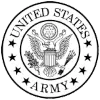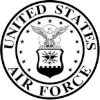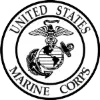Course Details
The CLFNDU-Understanding Cisco Collaboration Foundations V1.0 course is a 5-day course that is designed to teach students about initial parameters, management of devices including phones and video endpoints, management of users, and management of media resources, as well as Cisco Unified Communications solutions maintenance and troubleshooting tools. Additionally, students will learn the fundamentals of SIP dial plans including connectivity to Public Switched Telephone Network (PSTN) services, and how to use class-of-service capabilities. This course provides the basic knowledge needed prior to taking the CCNP Collaboration certification courses. The course also serves as entry-level training for newcomers to Cisco on-premise collaboration technologies.
Topics covered in the course include:
- Defining collaboration and describing the main purpose of key devices in a Cisco collaboration on-premise, hybrid, and cloud deployment model
- Configuring and modifying required parameters in Cisco Unified Communications Manager (CM) including service activation, enterprise parameters, CM groups, time settings, and device pool
- Deploying and troubleshooting IP phones via auto registration and manual configuration within Cisco Unified CM
- Describing the call setup and teardown process for a SIP device including codec negotiation using Session Description Protocol (SDP) and media channel setup
- Managing Cisco Unified CM user accounts (local and via Lightweight Directory Access Protocol [LDAP]) including the role/group, service profile, UC service, and credential policy
- Configuring dial plan elements within a single site Cisco Unified CM deployment including Route Groups, Local Route Group, Route Lists, Route Patterns, Translation Patterns, Transforms, SIP Trunks, and SIP Route Patterns
- Configuring Class of Control on Cisco Unified CM to control which devices and lines have access to services
- Configuring Cisco Unified CM for Cisco Jabber and implement common endpoint features including call park, softkeys, shared lines, and pickup groups
- Deploying a simple SIP dial plan on a Cisco Integrated Service Routers (ISR) gateway to enable access to the PSTN network
- Managing Cisco UCM access to media resources available within Cisco UCM and Cisco ISR gateways
- Describing tools for reporting and maintenance including Unified Reports, Cisco Real-Time Monitoring Tool (RTMT), Disaster Recovery System (DRS), and Call Detail Records (CDRs) within Cisco Unified CM
- Describing additional considerations for deploying video endpoints in Cisco Unified CM
- Describing the integration of Cisco Unity with Cisco Unified CM and the default call handler
This course will help students to:
- Administering a single-site Cisco Unified Communications Manager, handling daily tasks such as add, moves, changes and deletions of phones, video endpoints, and users
- Configuring Jabber devices and implement common endpoint features including call park, shared lines, pickup groups, and phone button templates
- Introducing participants to the SIP protocol, how calls are connected, and how media codes are determined
- Introducing students to the capabilities and basic configuration of an SIP gateway for PSTN access
- Introducing students to the dial plan elements used to route calls, and the class-of-service capabilities to control who can route calls where
- Administering Cisco Unity Connection handling daily tasks such as add, moves, and changes and deletions of voicemail boxes and users
- Administering maintenance tasks and use the troubleshooting tools available on Cisco Unified Communications Manager and Cisco Real-time Monitoring Tool
Target Student:
- Students preparing to take the CCNP Collaboration certification
- Exploring the Path to Collaboration
- Introducing Cisco Unified Communications Manager and Initial Parameters
- Exploring Endpoints and the Registration Process
- Exploring Codecs and Call Signaling
- Managing Users in Cisco Unified Communication Manager
- Describing a Basic Dial Plan
- Describing Class of Service
- Enabling Endpoints and Features
- Describing the Cisco ISR as a Voice Gateway
- Exploring Cisco Unified Communication Manager Media Resources
- Reporting and Maintenance
- Exploring Additional Requirements for Video Endpoints
- Describing Cisco Unity Connection
- Configure Default Cisco Unified CM System and Enterprise Parameters
- Configure the Cisco Unified CM Core System Settings
- Configure an Access Switch for an Endpoint
- Deploy an IP Phone Through Auto and Manual Registration
- Administer Endpoints in Cisco Unified Communications Manager
- Create a Local User Account and Configure LDAP
- Implement Users
- Create a Basic Dial Plan
- Explore Partitions and Call Search Spaces
- Describe Private Line Automatic Ringdown (PLAR)
- Deploy an On-Premise Cisco Jabber® Client for Windows
- Implement Common Endpoint Features
- Configure Common Endpoint Features
- Configure Voice over Internet Protocol (VoIP) Dial Peers
- Configure Integrated Service Digital Network (ISDN) Circuits and Plain Old Telephone Service (POTS) Dial Peers
- Control Access to Media Resources
- Use Reporting and Maintenance Tools
- Explore Endpoint Troubleshooting Tools
- Examine the Integration between Unity Connection and Cisco Unified CM
- Manage Unity Connection Users
This course is intended to be an entry-level course.
There are no specific prerequisite Cisco courses; however, the following skills are required:
- Internet web browser usability knowledge and general computer usage
- Kno"
1522,1635,,100618,WLFNDU-Understanding Cisco Wireless Foundations v1.0,0,0,Cisco,cisco.png,,cisco,"
The WLFNDU-Understanding Cisco Wireless Foundations v1.0 course is a 5-day course that is designed to provide students with the knowledge and skills they need to position, plan, implement, operate, and manage a Cisco wireless LAN (WLAN) network. The course teaches students how to design, install, configure, monitor, and conduct basic troubleshooting tasks on a Cisco WLAN network of any size. The course also provides foundational knowledge that will prepare students for the professional-level enterprise wireless certification exams.
Topics covered in the course include:
- Describing and implementing foundational wireless theory
- Describing and implementing basic wireless security and client access
- Describing and implementing a Cisco wireless network architecture
- Configuring Cisco centralized wireless networks
- Describing and implementing WLAN maintenance and troubleshooting
This course will help students:
- Learn the skills, technologies, and best practices needed to manage a Cisco WLAN network
- Understanding and implement a Cisco wireless network architecture
- Designing and implementing WLAN maintenance and troubleshooting solutions
Target Student:
- Network engineer
- Systems engineer
- Wireless engineer
- Technical solutions architect
- Network administrator
- Wireless design engineer
- Network manager
Prerequisites:
We recommend but do not require that students have the fol
Available 24/7
Professional Instruction
Free Training Materials






Testimonials
This was the class I needed.
The instructor Jeff took his time and made sure we understood each topic before moving to the next. He answered all of our questions, and I don't know about the rest of the students, but was very pleased with this experience.
I finally understand how to use Excel.
-Amanda T (Yale New Haven Hospital).
Great class!
We were able to cover a lot of information in one day without getting overwhelmed.
-Maria R (Microsoft).
Free Repeats
Learn At Your Pace
No Travel
Professional Instruction
Affordable Pricing
Group Discounts



